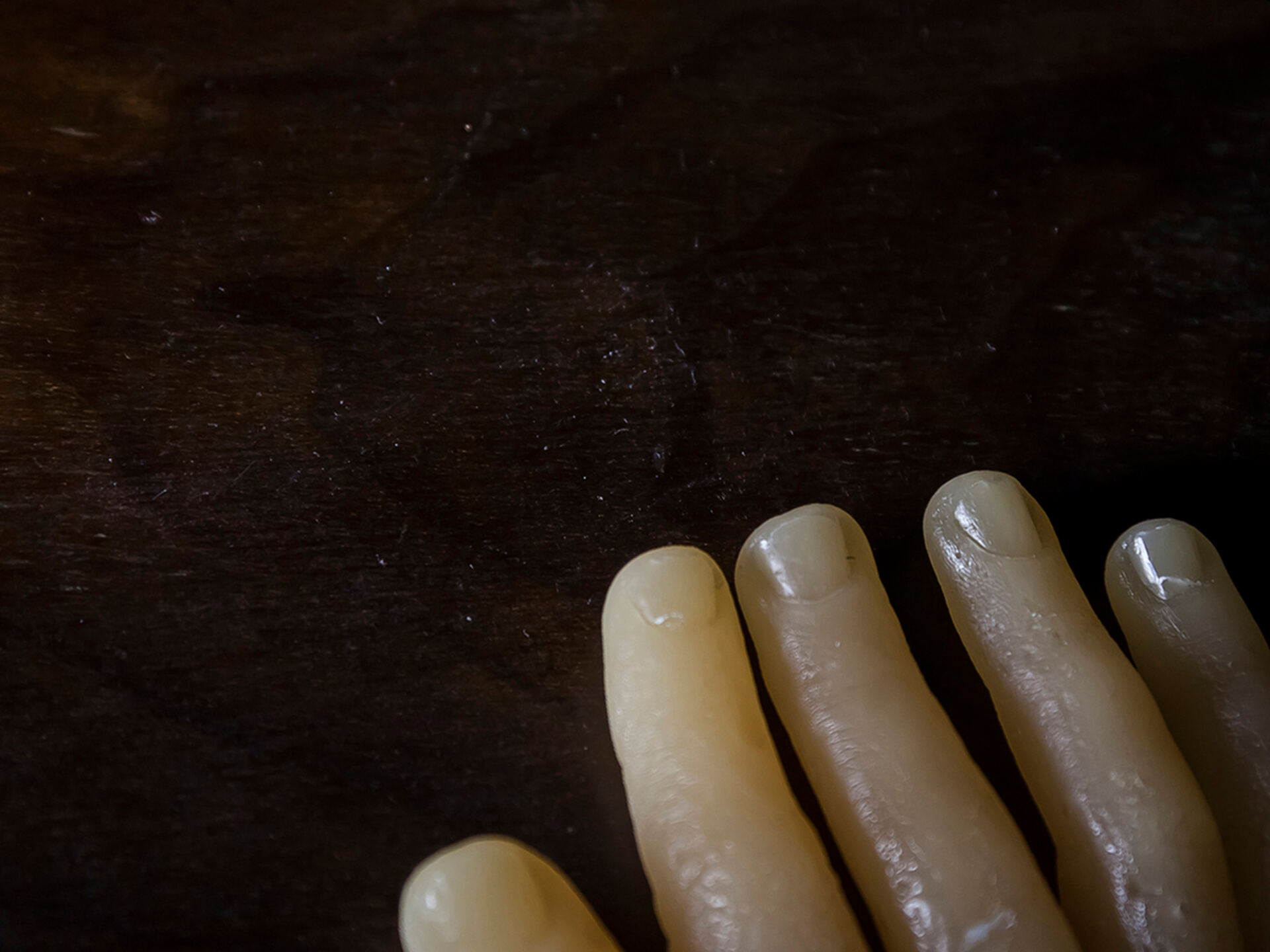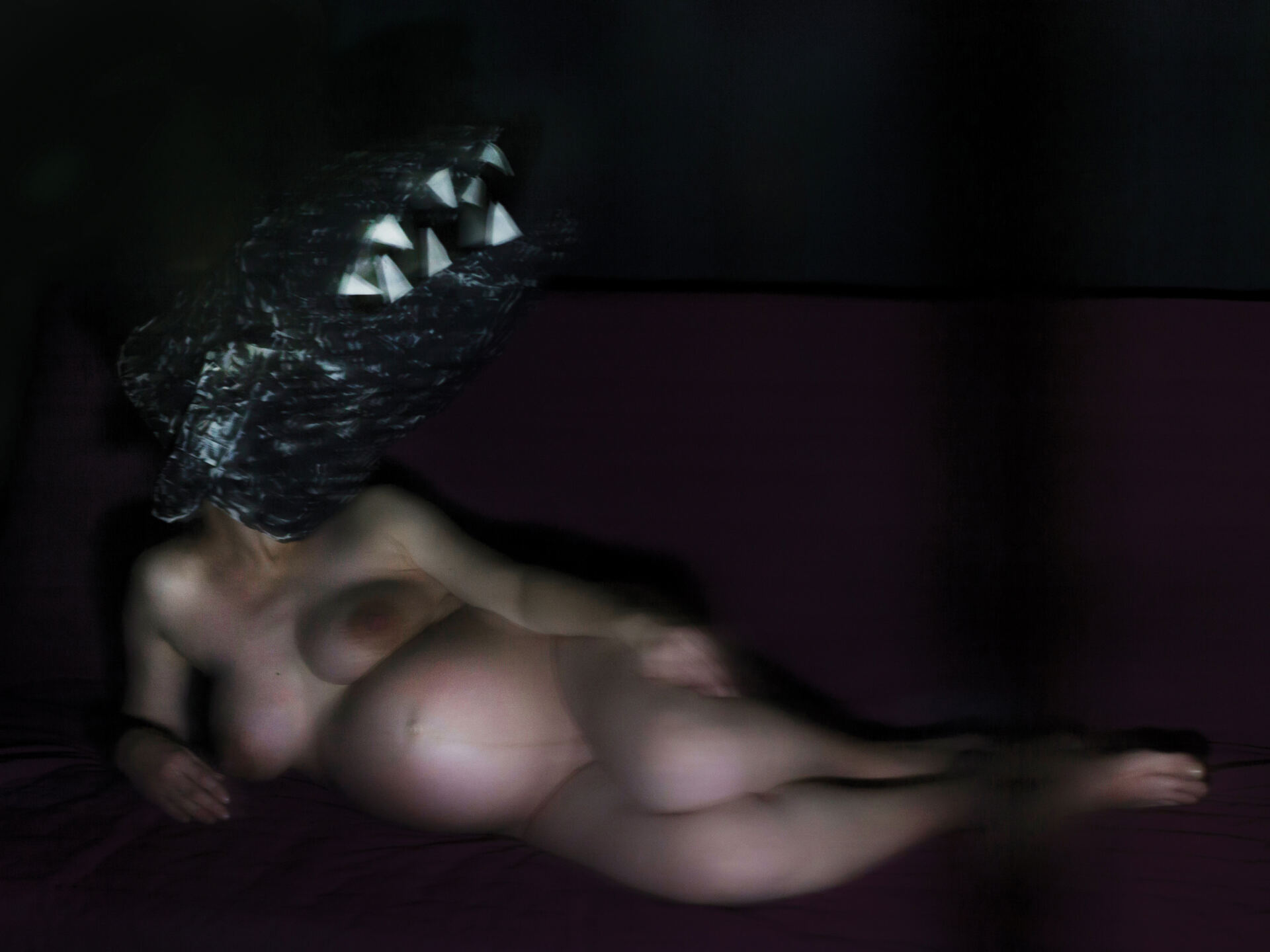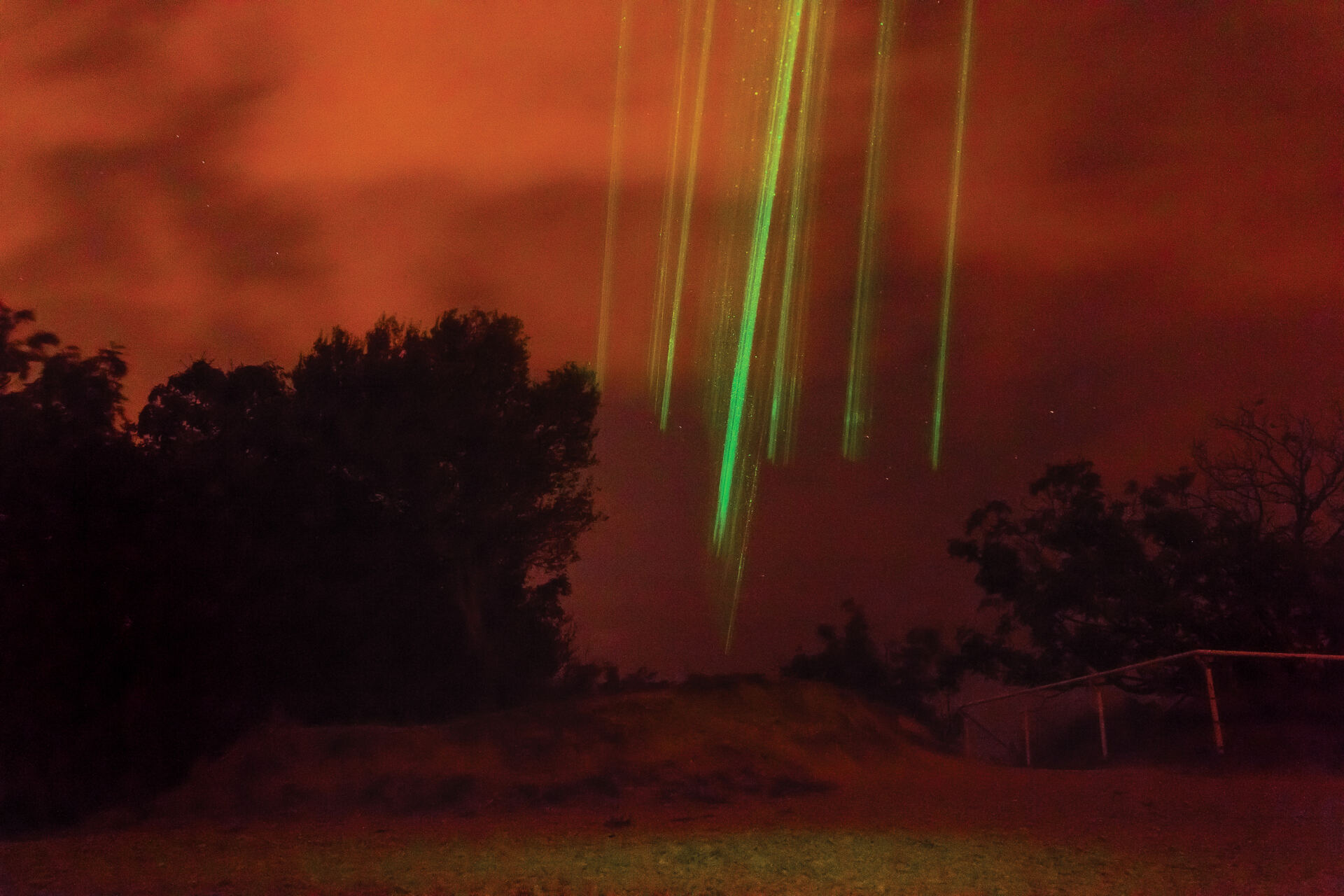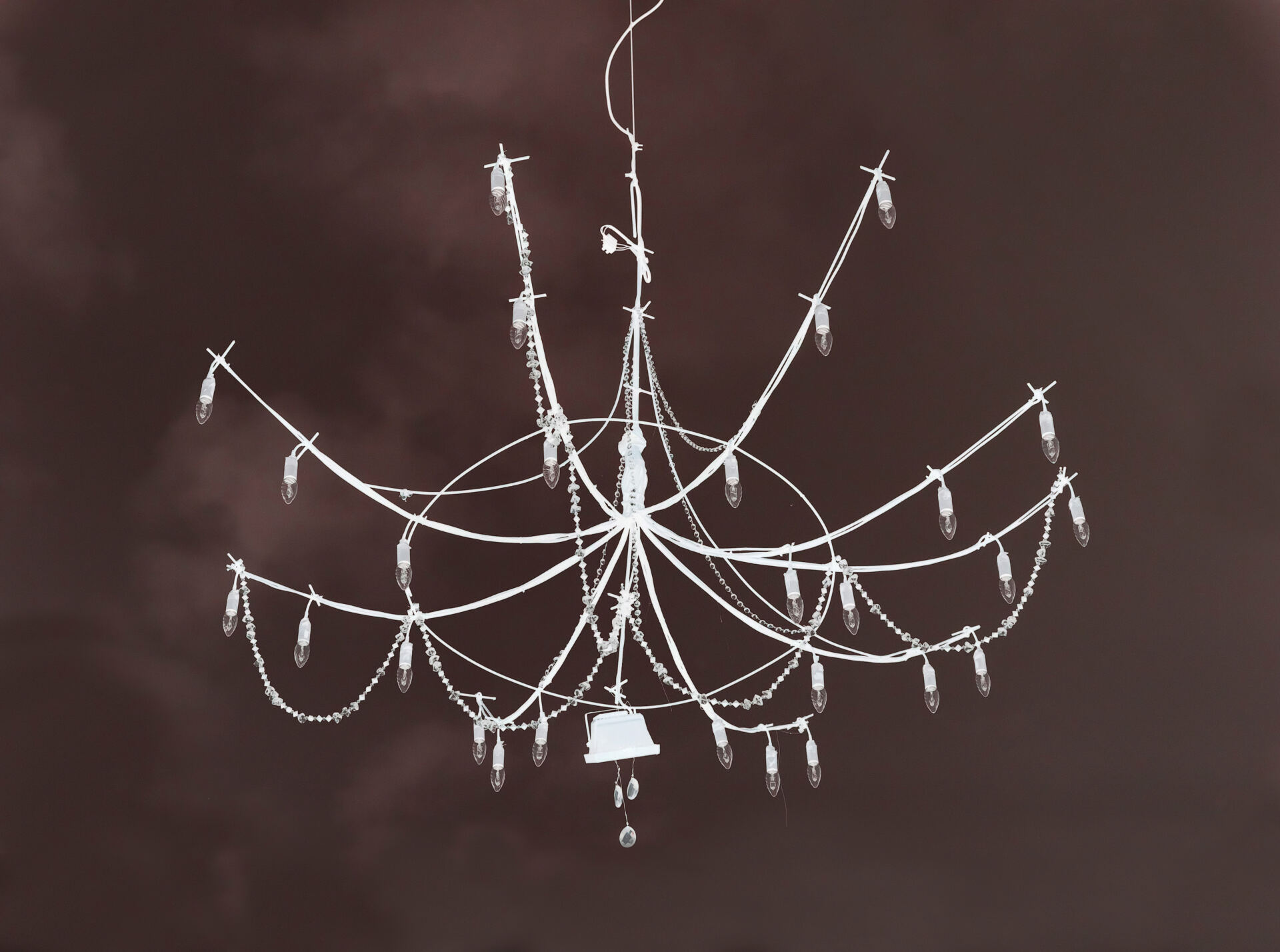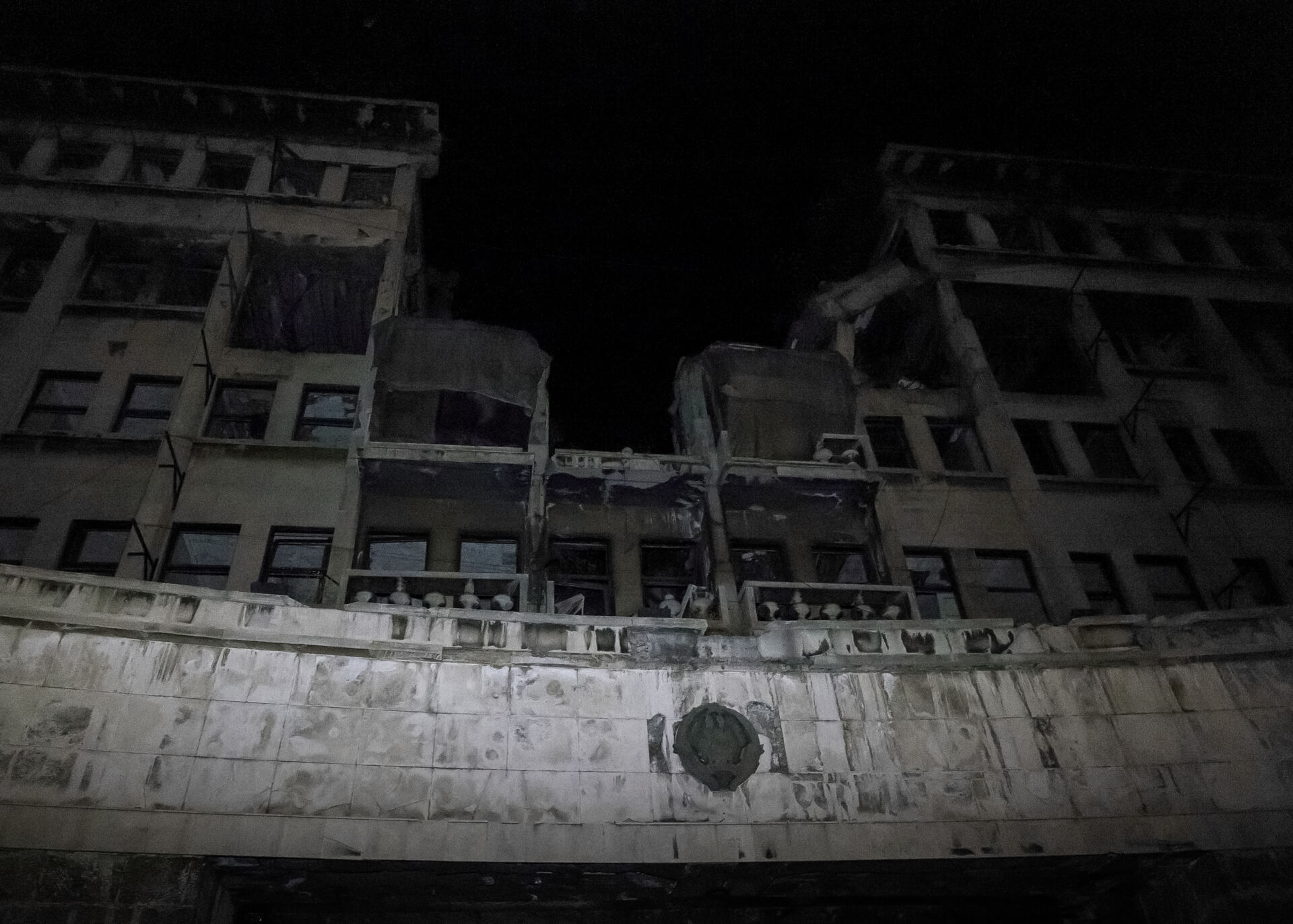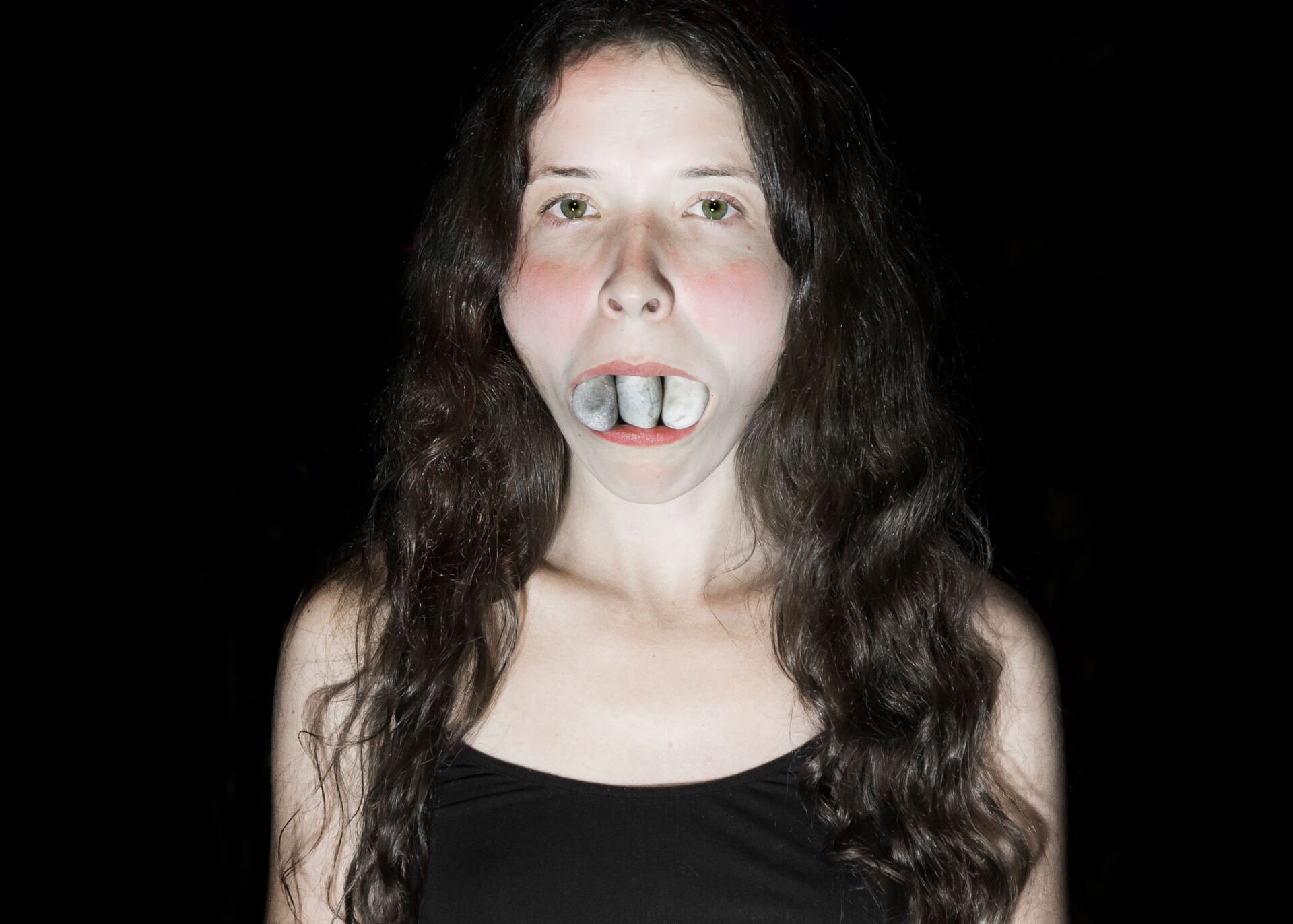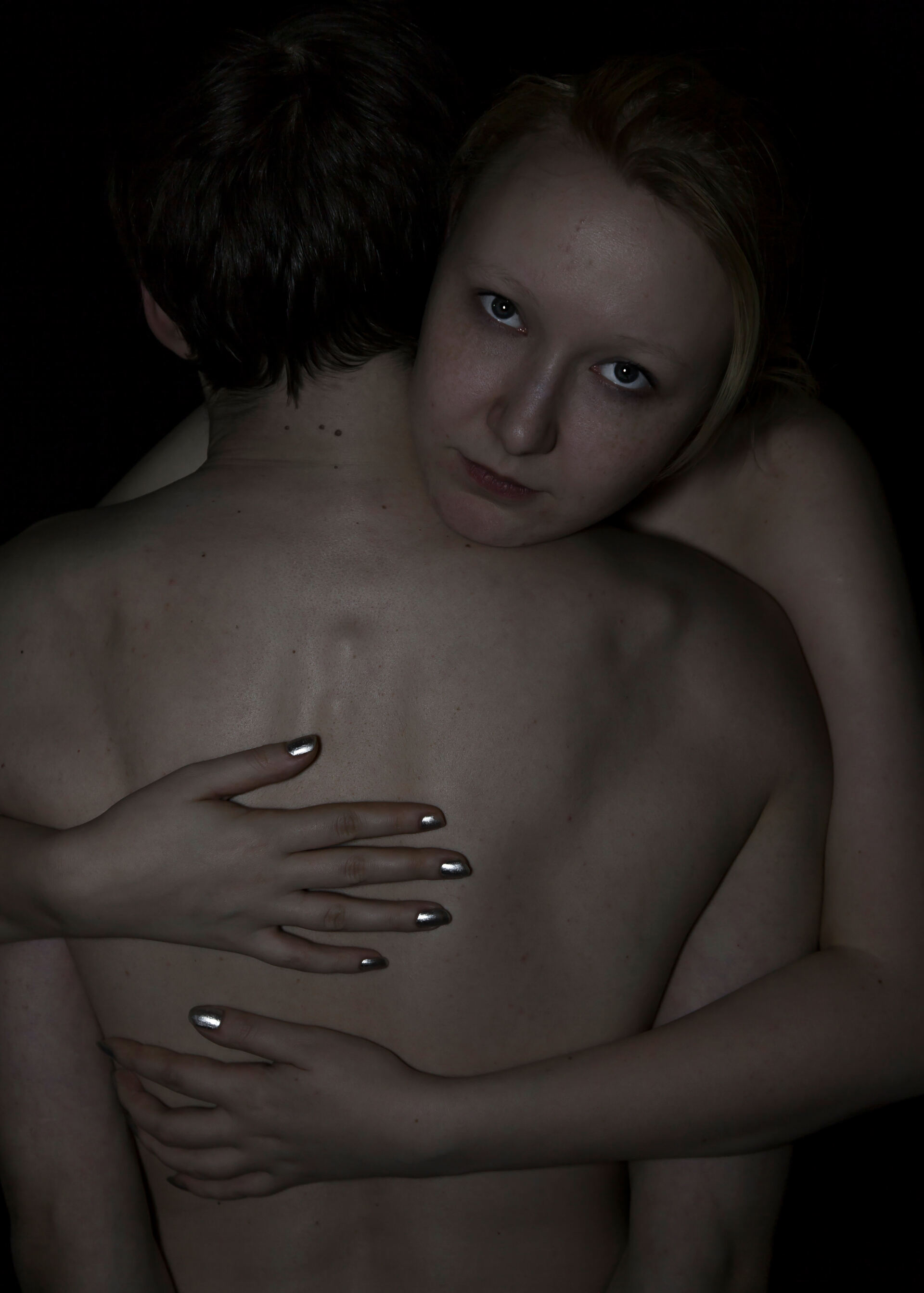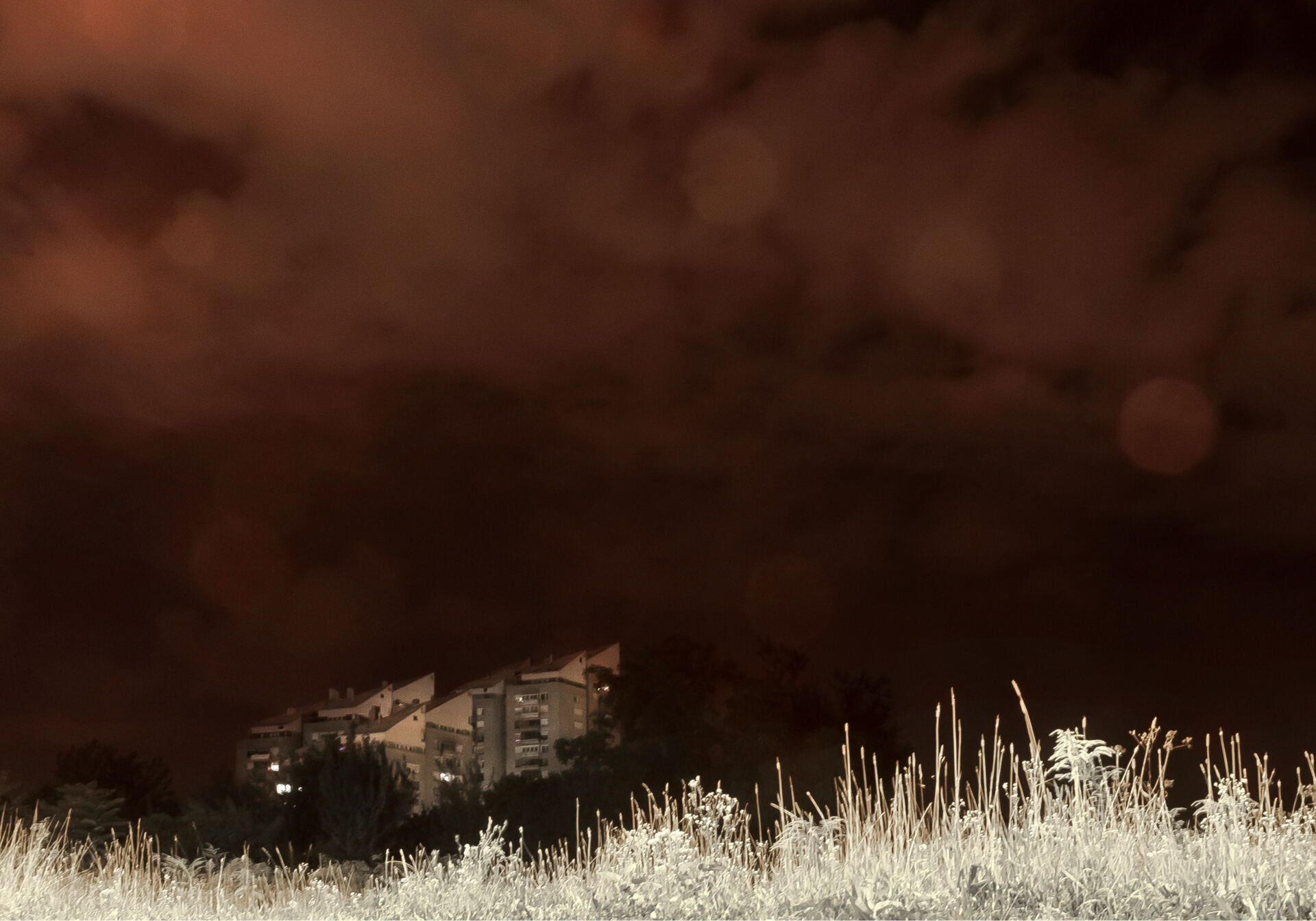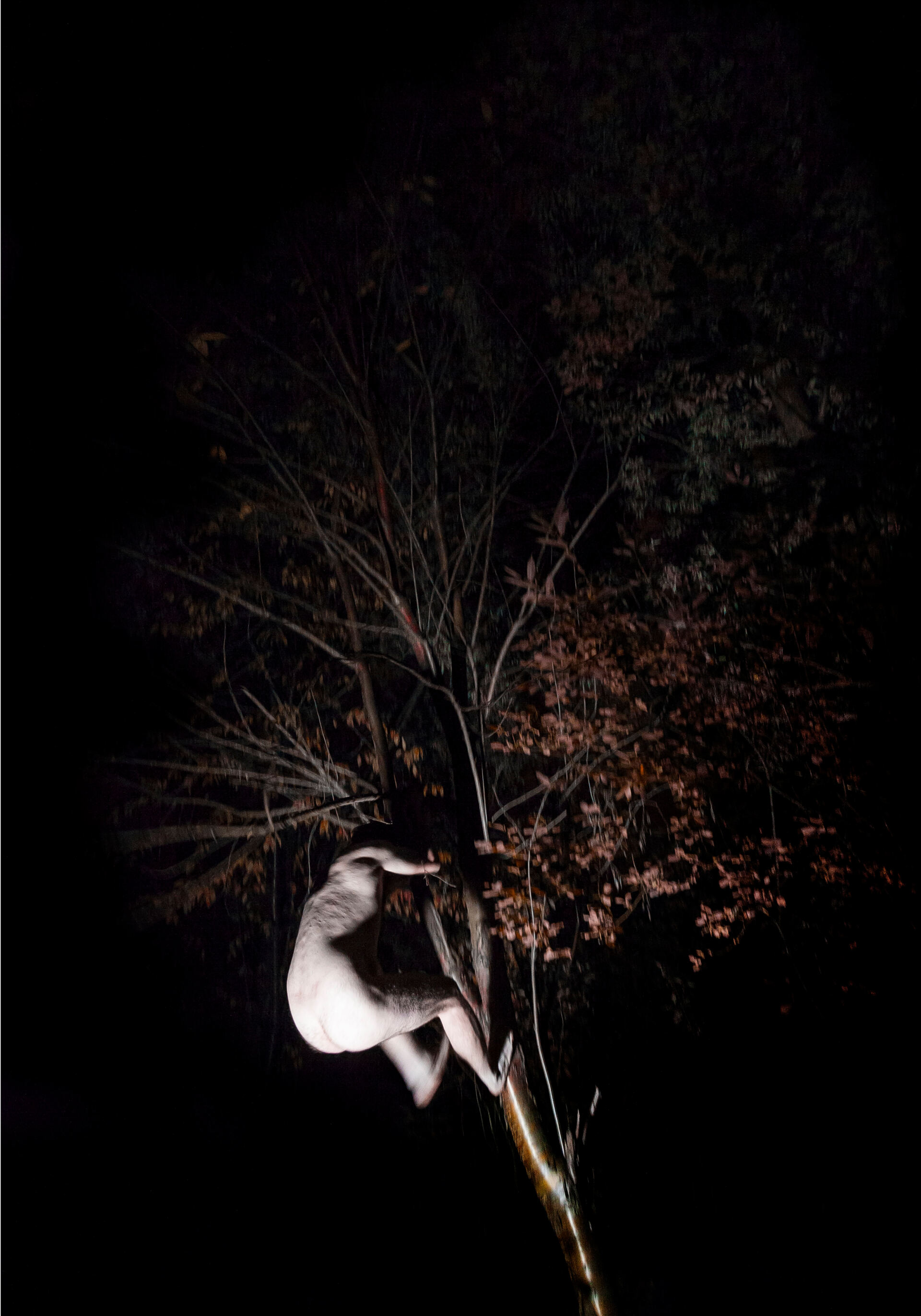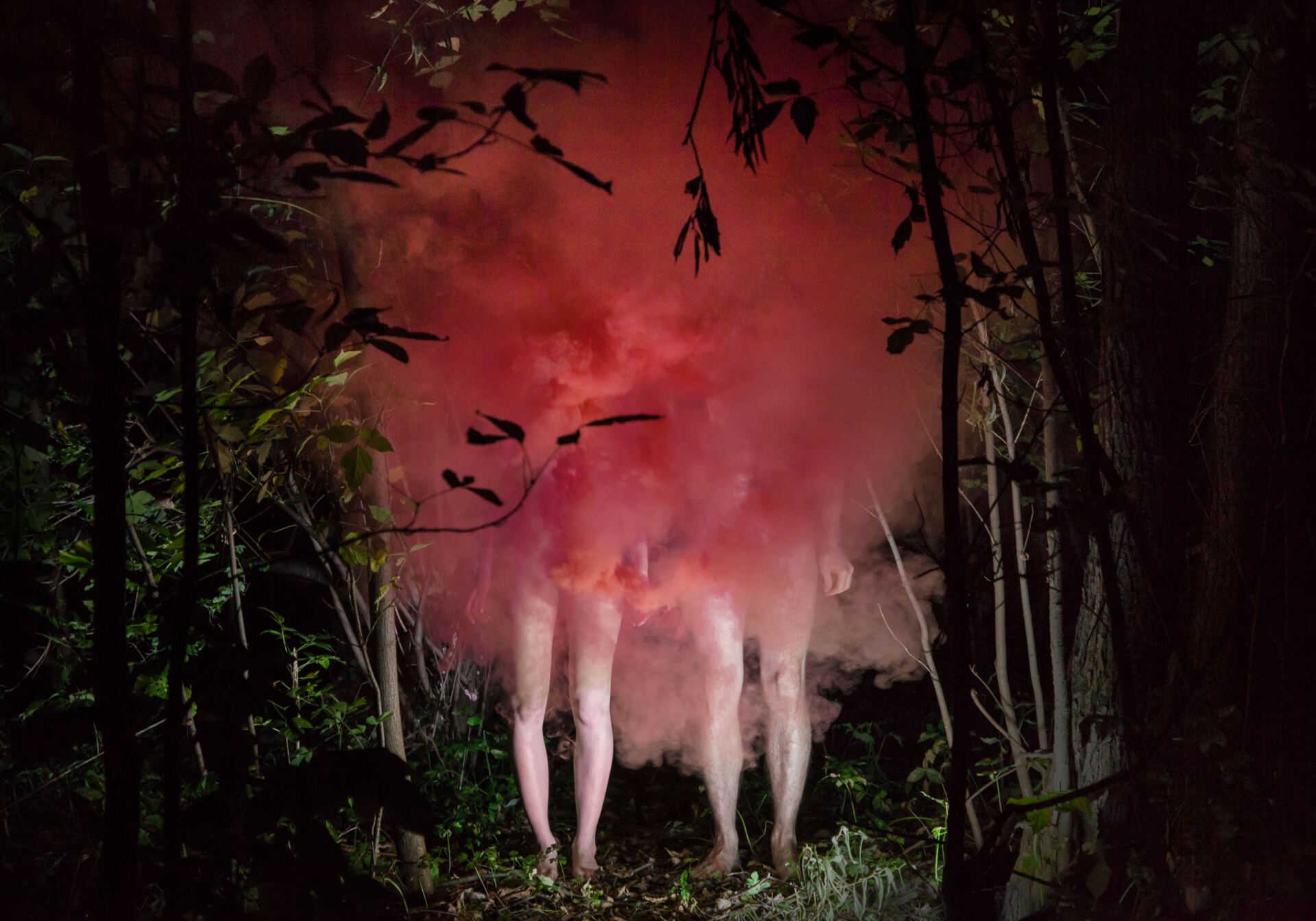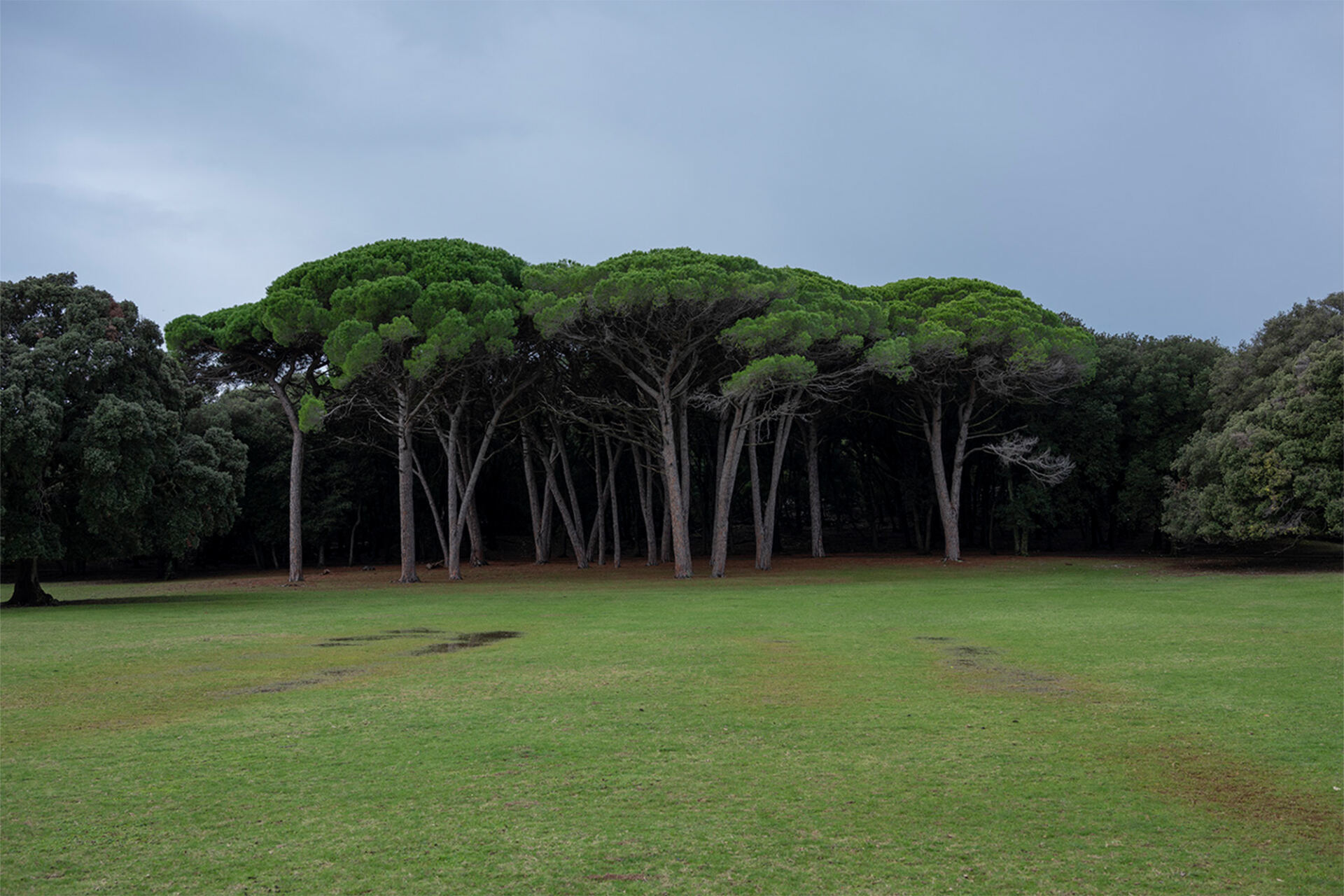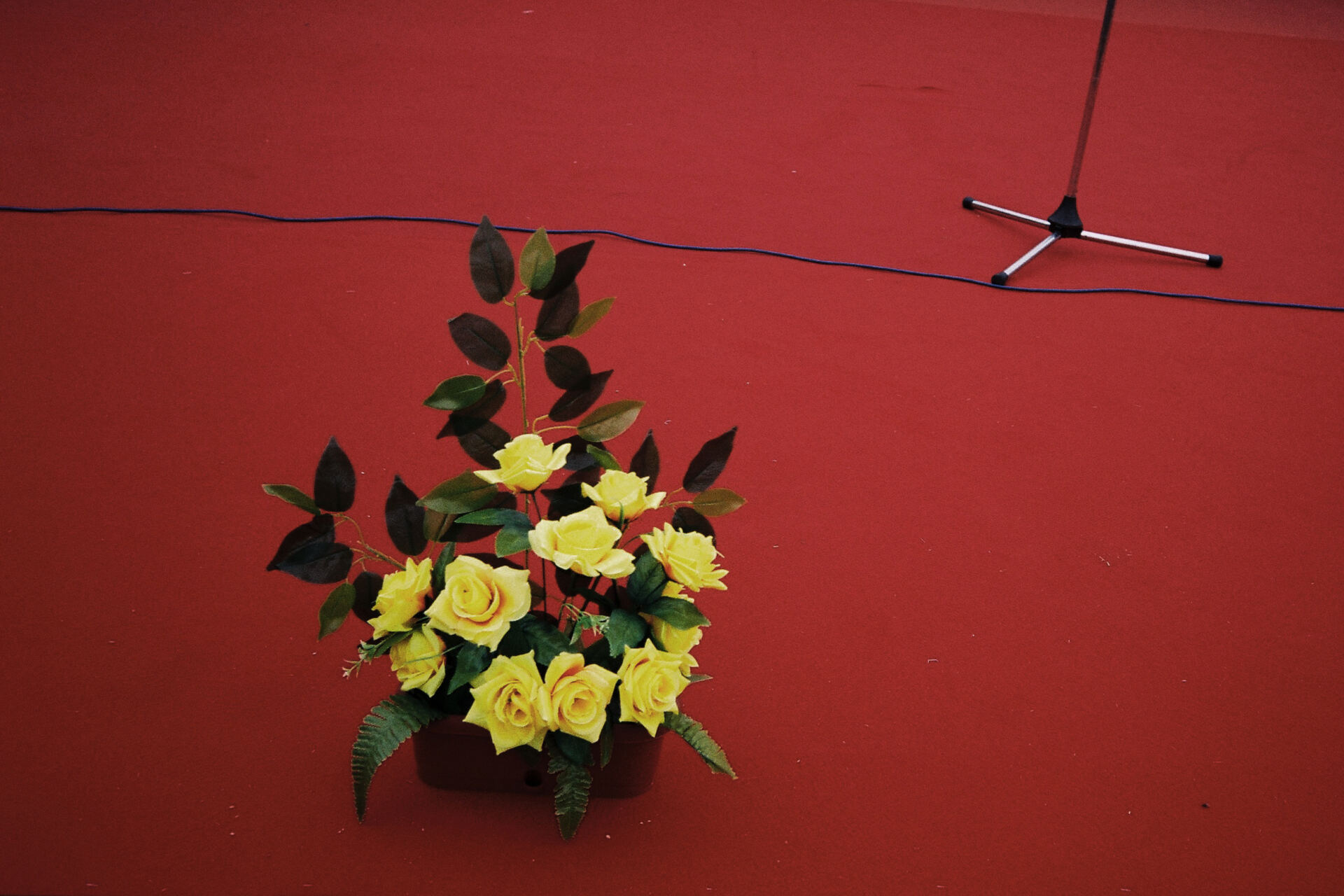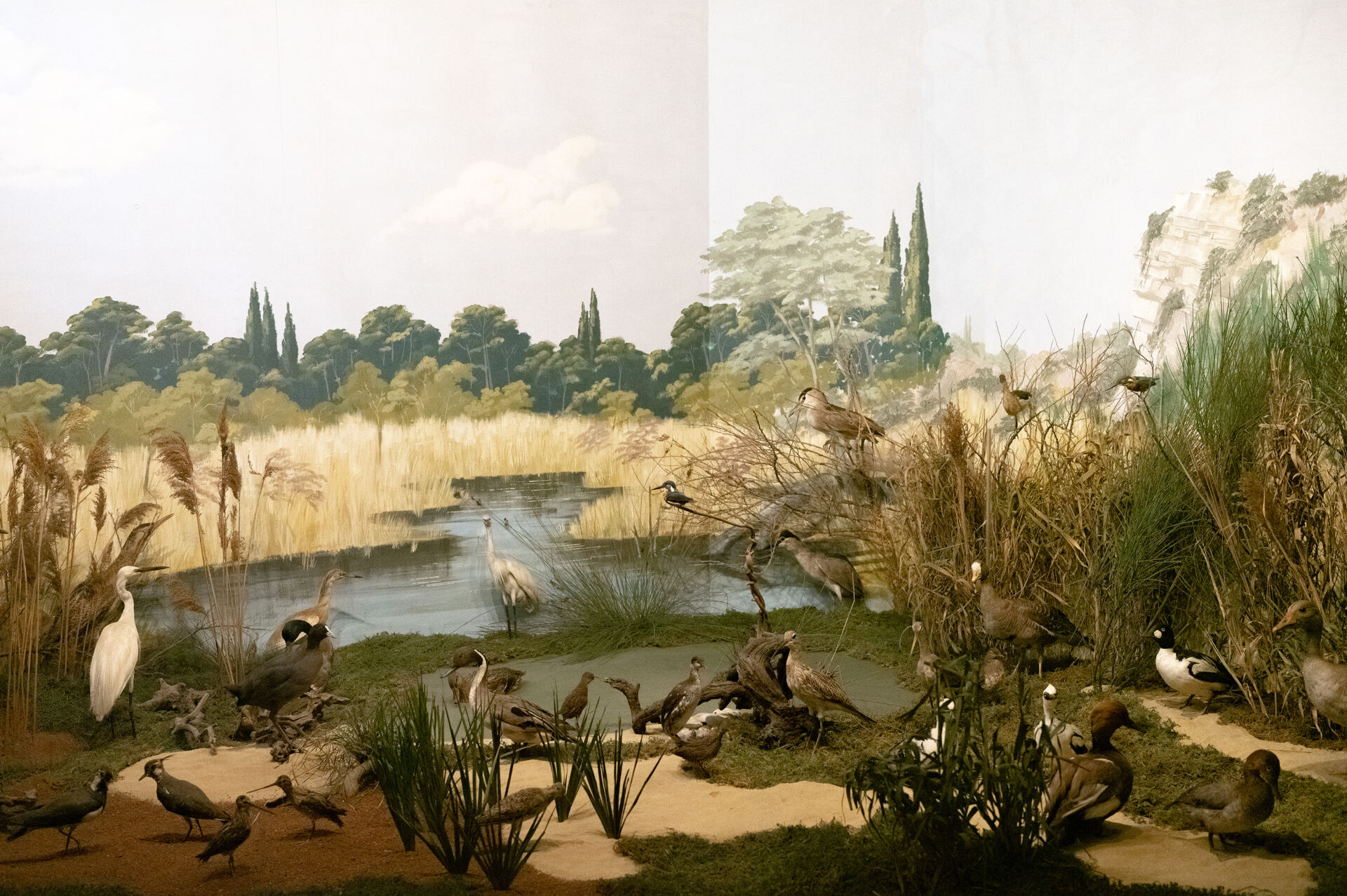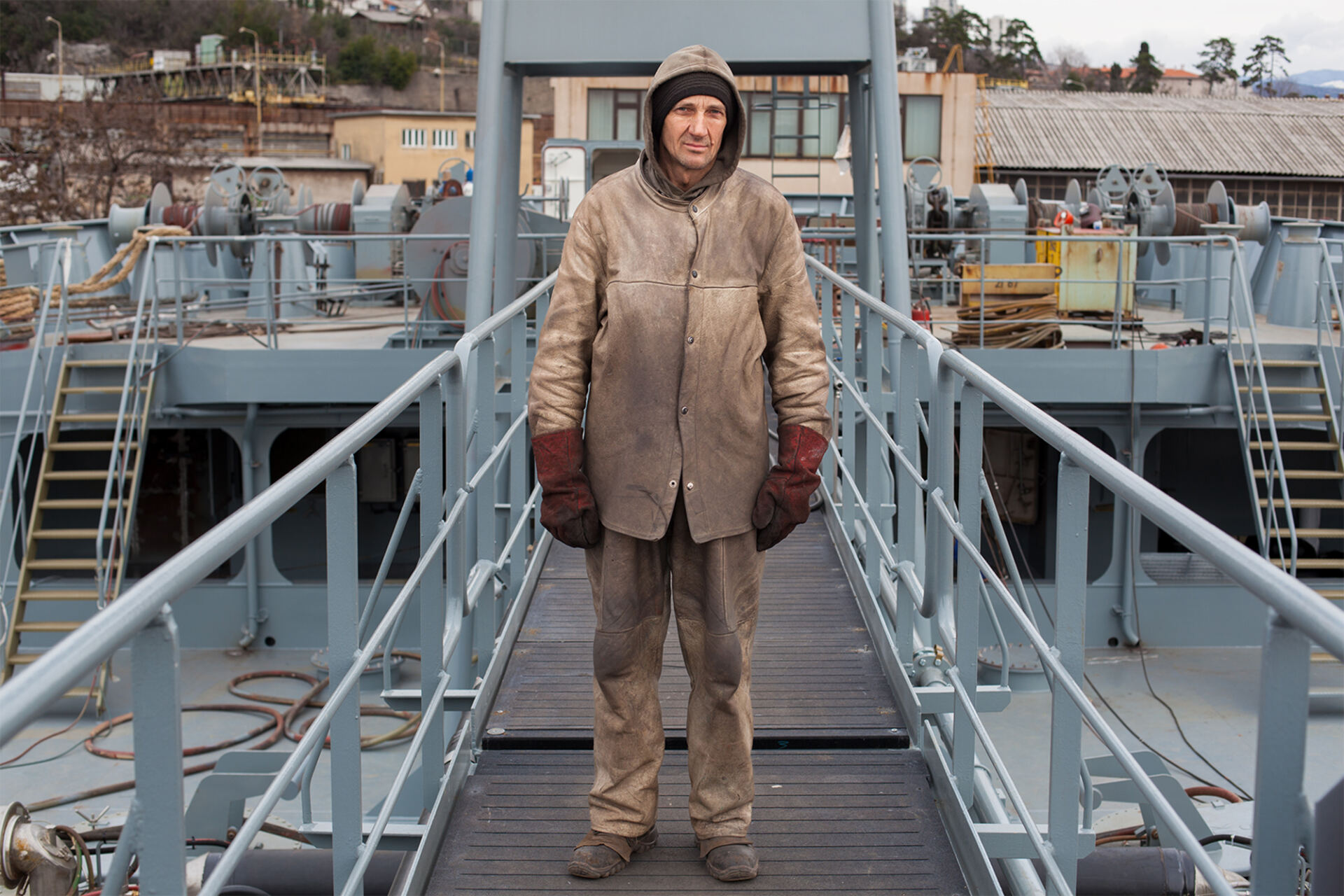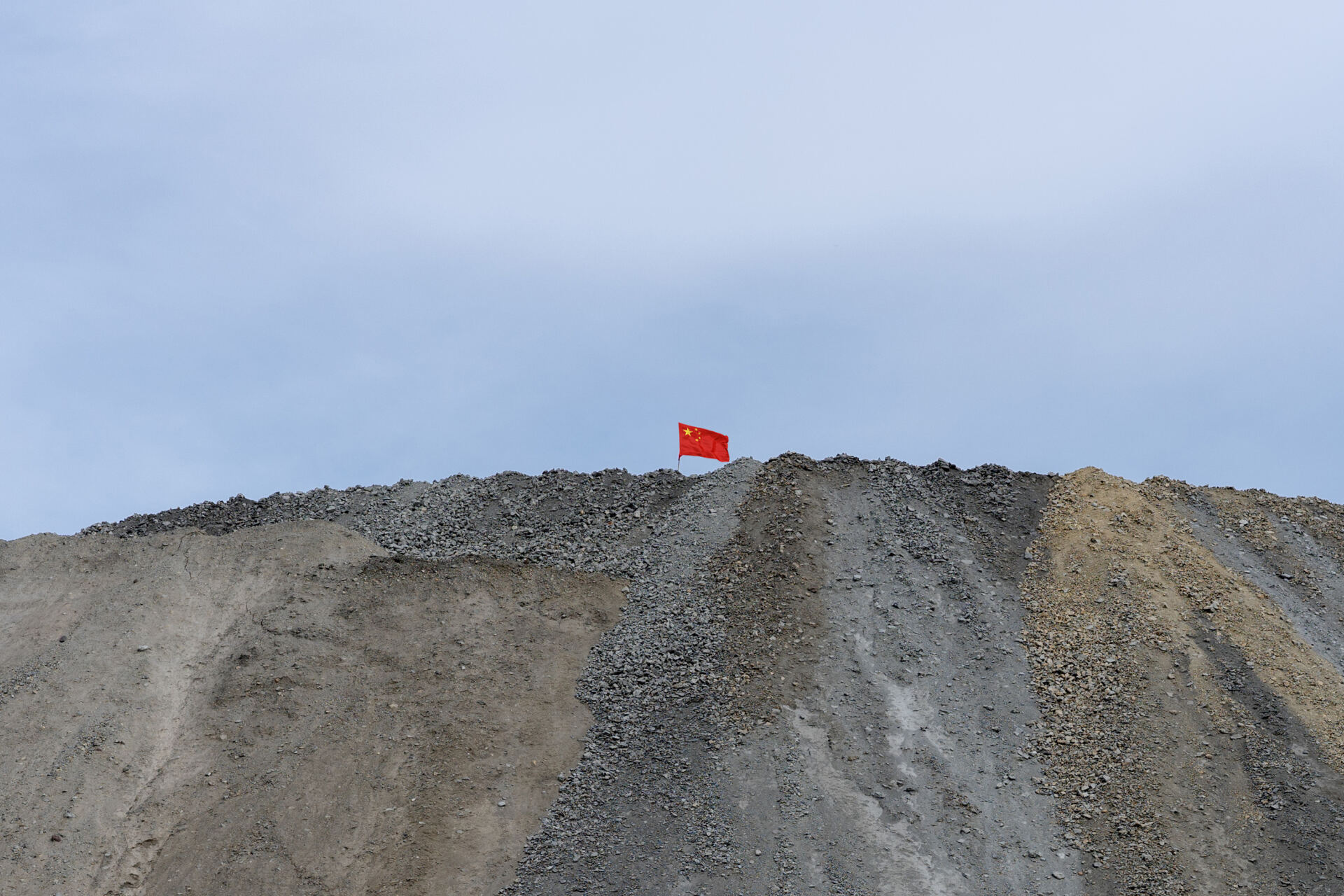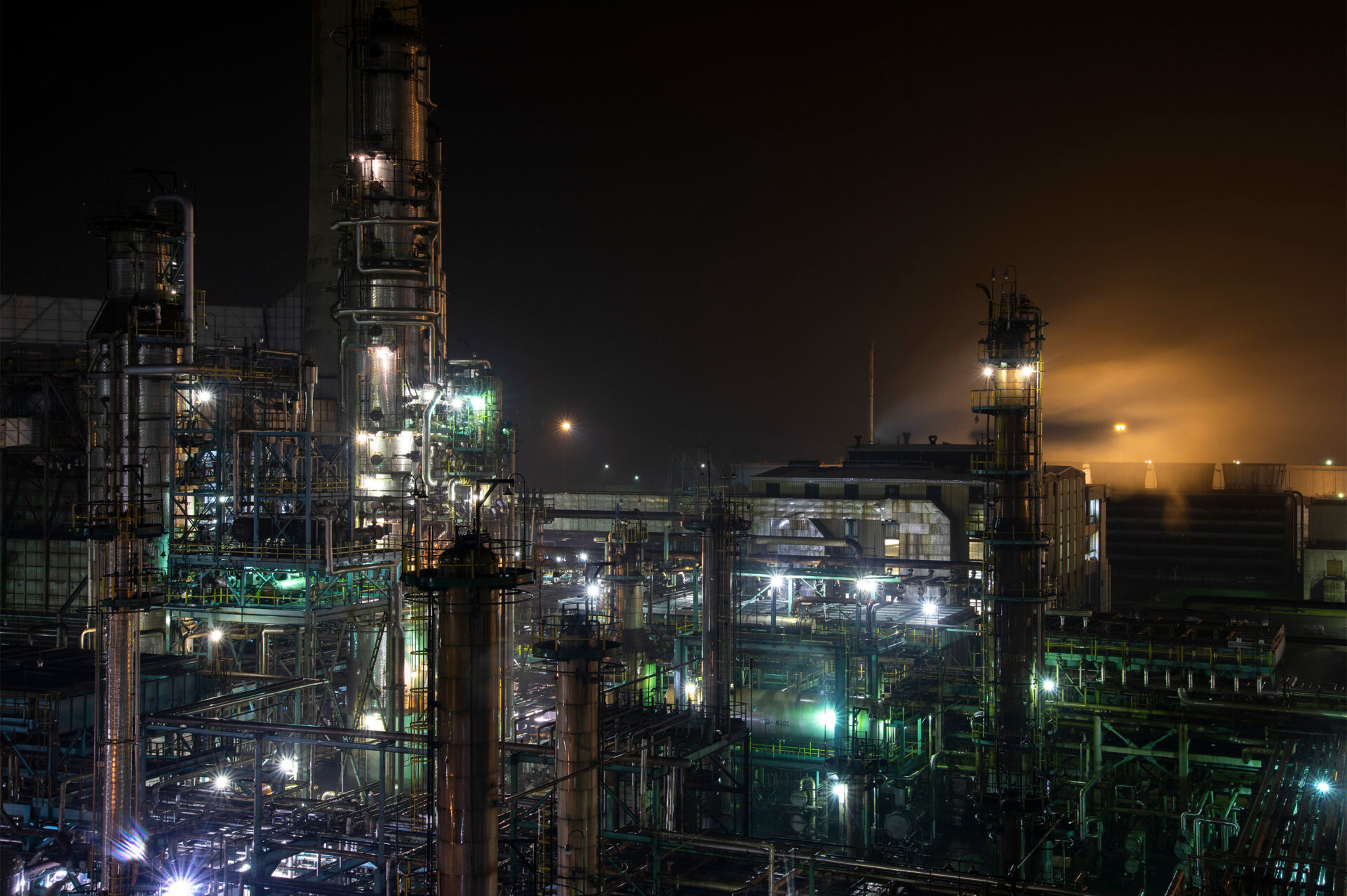Hereafter • Davor Konjikušić & Olga Matveeva
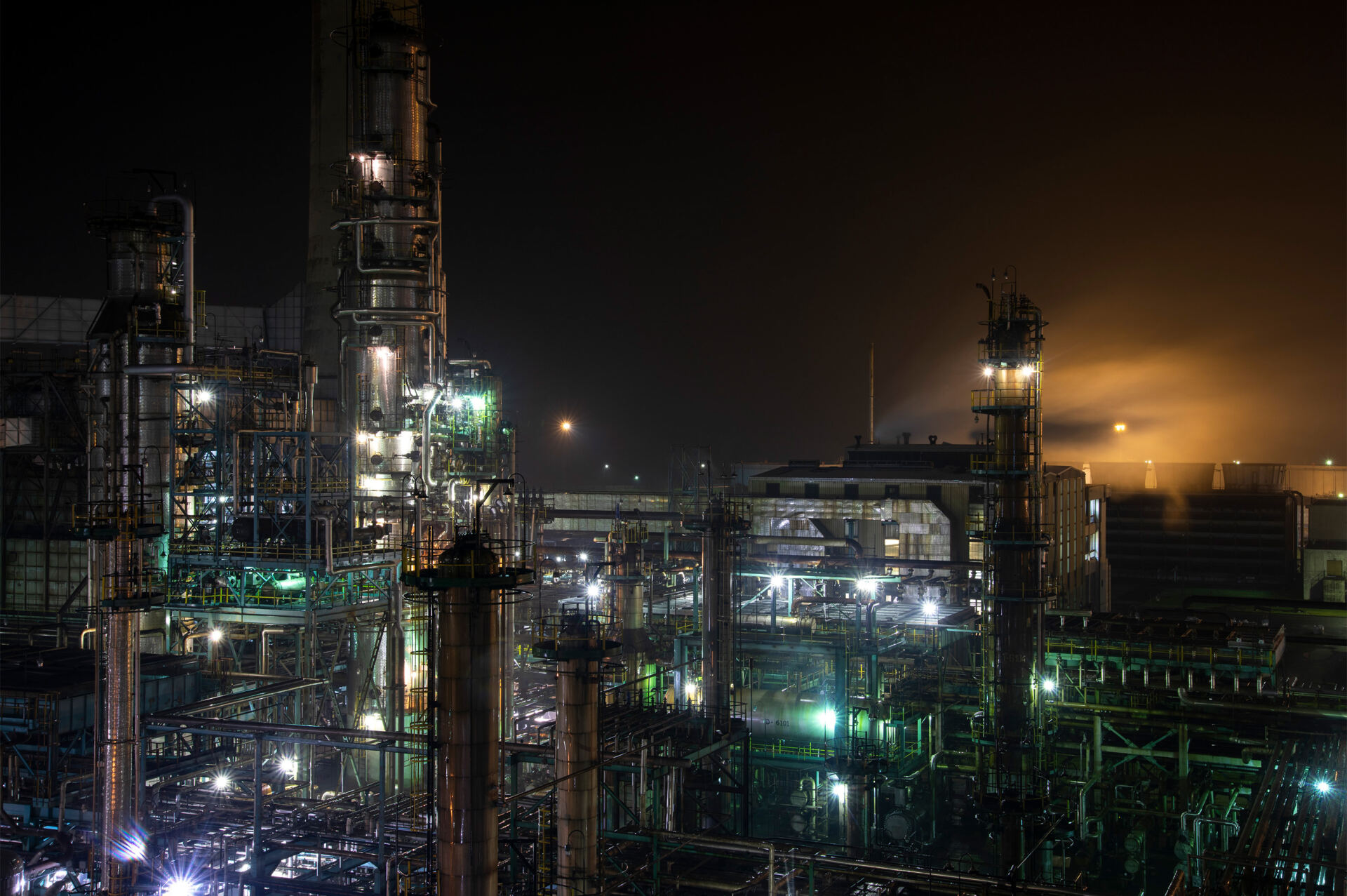
Artget Gallery, Trg Republike 5/1
30. 5 – 29. 6. 2024.
Miha Colner, Artistic Director of the Artget Gallery for 2024.
It seems that each generation, and each period in history, creates its own narrative about the present and future which usually derives from the understanding of the past. In the past twenty or thirty years the world adopted much more grim perception of reality than the period that preceded it. The 21st century broke away from the values and ideas of the postwar order that, despite ideological polarisation and tense political relationships, at least in theory, championed progress and prosperity. Currently, however, increasingly globalised societies, especially the ones of so-called developed world, view the present and future as gloomy and dangerous. Majority of people do not believe that the future would bring better world and happier life. Instead, hopes for greater prosperity, equality, solidarity and safety are perceived as rather utopian and naïve.
But why would people in the period of history when, (at least statistically) despite many conflicts and catastrophes, most of them live better, longer, healthier and safer lives than ever before look into the future with such resignation and disillusionment? Is it historically implausible for a civilisation to retain period of peace and prosperity for a longer period of time? Is prosperity compatible with sustainability? Is the memory of devastating global wars in the 20th century fading away so fast that only eighty years later so many people are not aware any more of the dangers of global instabilities and conflicts?
The present-day in 2024 seems to be extremely precarious and complex. The world population is twice as big as it was fifty years ago, but it does not have any more resources at disposal. Politically, many societies turned against the model of social egalitarianism that actually made the population growth possible, and instead followed the trend of social Darwinism that led to ongoing competition and power struggle. The second half of the 20th century was characterised with great hopes for brighter future, while the 21st century is infested with pessimistic prospects and cynical perceptions of the things to come. But is there a true reason and sound argument for such catastrophic prospects? In his book New Dark Age: Technology and the End of the Future (2018) James Bridle claims that human intelligence and knowledge are not always cumulative, and that human race may possibly has already reached its peak of scientific and technological progress since increased levels of C02 in the atmosphere may cause serious reduction of people’s cognitive capabilities.
The artists Davor Konjikušić and Olga Matveeva address these complex and multifaceted questions in their own unique ways but there is unifying notion of unease that defines both their works. Their diverse and ambiguous images, marked by dark and eerie atmosphere, are undoubtedly narrative, but in a distinctly non-linear way. Instead, they communicate through metaphors in order to point out their concealed potential meanings, embracing current dystopian and dark perception of the world and its future. In doing so Matveeva refers to myths and legends of the past to understand the present, while Konjikušić looks into the history of future that (can) eventually turn into unexpected reality.
In the series Mantika (2021-2024) – the expression that describes the art of predicting the future – Konjikušić merges images of decaying industrial complexes, adoptable ideologies, artificial entities and possible escapisms. He tackles individual and collective memories from the turn of the 20th and 21st centuries that saw complete breakdown of former values that were replaced by hyper-nationalism, economic inequality and cultural provincialism. The demographic and economic experiments caused by free-floating international capital and willingness of national states to comply with it, can lead to the demise of humanity. Therefore, the image of modern industrial complex that in the 20th century represented the idea of scientific and technological progress, can only couple of decades later, in the age of deregulated economies and deindustrialisation, become at best a reminder of current environmental issues. With this piece Konjikušić addresses the phenomenon of once anticipated futures that eventually became present reality, but they rarely turned out as it was expected. In retrospect, now historic high hopes for the future appear almost naïve.
In a similarly dystopian manner Matveeva highlights the bleak prospects of the present age with visual means. In her ongoing series Intrusion (2017-2024) she combines images of artificial and man-made forms with visual narratives of folk tales. The gloominess of contemporary world which is, yet and again, ravaged by wars, tyrannies, and threat of the imminent environmental collapse, is metaphorically compared to the figure of a vampire. Nowadays, vampire can be a reflection of popular culture that worships an eternal youth, beauty, success and power, or a symbol of war-mongering bureaucrats and compassionless businessmen that mind only their own short-term interests. The photographs and video of Matveeva may showcase the remnants of a civilisation in free fall, the invisible hand of humankind that can be utterly useful, and at the same time painfully destructive. The architectural forms of urban and industrial structures, that could be understood as landmarks of civilisation or as signs of its downfall, and figures of people in seemingly symbolic roles, testify to her profoundly grim perception of the present and future.
Miha Colner
Davor Konjikušić (1979) is a photographer, artist, educator, writer and researcher whose central interest is to explore the relationships between power and control. He graduated from cinematography at the Academy of Dramatic Art in Zagreb. He uses photography as a primary medium in articulating his artistic concepts while combining it with text, archive materials, found objects and moving images. Currently, he is an assistant professor at the Academy of Dramatic Arts in Zagreb, and founder of the Unwanted Images platform. He lives and works in Zagreb, Croatia.
www.davorko.net
Olga Matveeva (1986) is an artist working across different media, from lens-based art to installation, as well as an educator, publisher and independent curator. In her artistic practice she is focused on the experiences of an individual in an ever-changing socio-political turmoil while being immersed in mythology and mysticism. She graduated in political science at the State University for Human Sciences in Moscow in 2008, and from photography at the Rodchenko Art School in 2013. She is the co-founder of independent publishing platform Book[e]lab. She lives and works in Belgrade, Serbia.
www.olmatveeva.com
